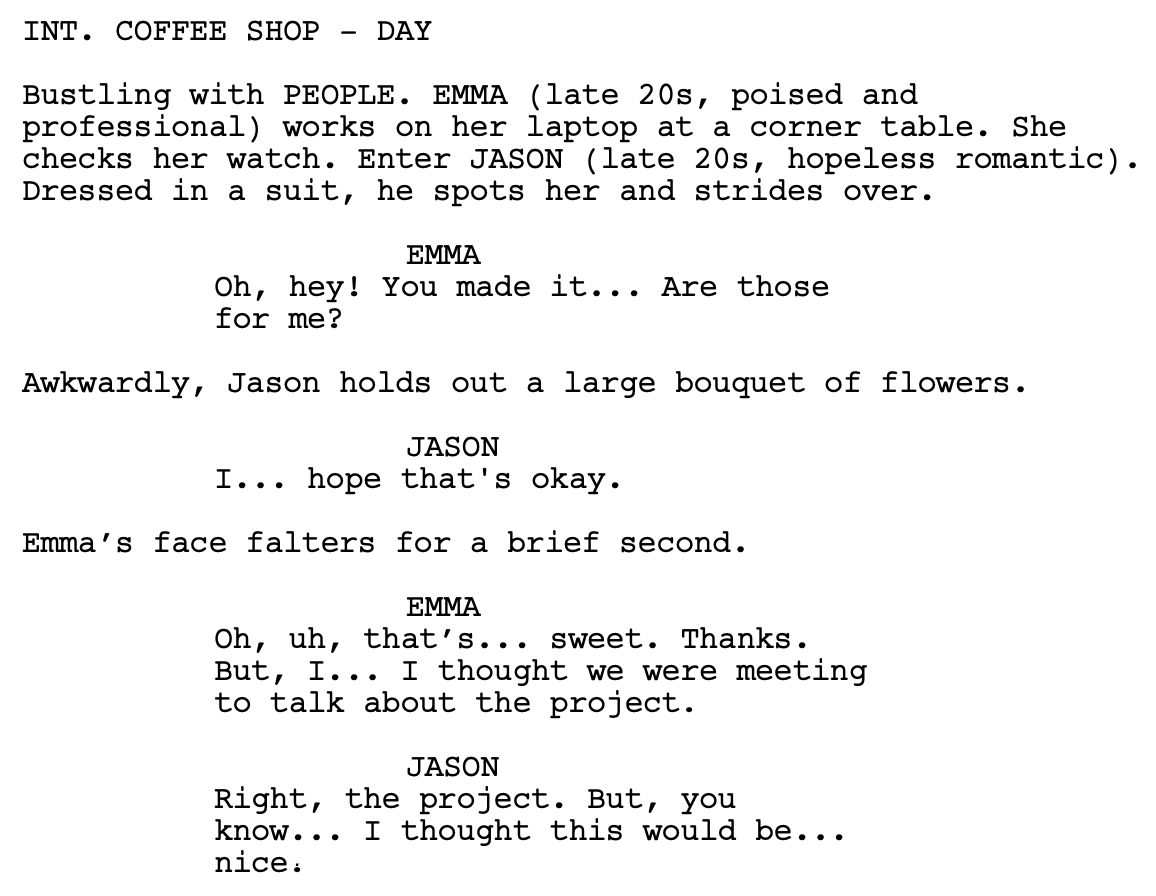Fix This - 3.16.25
One thing that separates superb screenwriters from mediocre screenwriters is, well, their writing. Little adjustments to your sentences can have a big impact on the overall quality of your work.
If you were tasked with rewriting the excerpt below, what changes would you make?
The first thing we notice is the slugline and the first sentence of scene description are repetitive. There’s no reason to tell the reader we’re in a coffee shop twice.
Also, don’t forget that any characters in your script should be written in all caps the first time we see them—that includes extras and background characters! The word “people” needs to be in all caps.
Speaking of introducing characters, we strongly recommend writers use character intros to tell us something about the character, not what the character is wearing. First, the costume designers will work with the director to decide what the characters should wear. It’s not really the writer’s job. Second, it’s so much more interesting for an actor to have insight into the character they’re playing than to have a detail about the character’s wardrobe. You might think describing a character’s outfit is doing both—and sometimes it is—but there’s usually a stronger way to give us information about the character.
“But,” you might argue, “what if it’s really important for the story to know James is wearing a suit. If the detail serves a true story purpose, it’s okay to weave it in. Here’s one possibility…
As you continue to read the excerpt, did something feel off when Emma said, “Are those for me?” and James held out a bouquet of flowers? If you’re like us, you thought, “Flowers? What flowers?” That’s because the bouquet wasn’t set up properly before it showed up in the scene. If James has flowers in his hand, the reader needs to see them when he walks in the door.
As an aside, moving that detail into the first paragraph made it five lines long. We recommend writers stick to a max of four lines per paragraph. This keeps your page from looking too bogged down by action description. Appearances matter!
Moving along, we get to the line, “Emma’s face falters for a brief second.” Are there any changes you would make here?
For us, “brief second” is repetitive. Seconds are brief by nature, so you don’t need to tell us that. If you cut that word, the sentence becomes, “Emma’s face falters for a second.”
That’s fine, but if you push yourself to be really critical of the writing, you could argue that “for a second” is also unnecessary. “Falters” implies that her face changes briefly, so you don’t actually need “for a second.” Plus, getting rid of that portion of the sentence, means you now end it with the strongest word. Always a bonus!
Last but not least, did you notice all the ellipses in the dialogue? We bet you did—they’re distracting! Not only that, but they risk micromanaging the actors. We know it’s tempting to put them in because that’s how you hear the dialogue in your head, but keep them to a minimum and trust your actors to bring your lines to life. Save the ellipses for where they’re truly needed.
Also worth noting is the fact that both characters use ellipses makes their dialogue feel the same. Try to keep your characters’ voices distinct.
Now that you’ve have practice spotting mistakes in other people’s writing, see if you can make any of these changes in your own.
If you’ve got an idea, but you need help developing and writing your script, sign up for Screenwriting Essentials. We’ll teach you everything you need to know about completing an excellent script draft.







